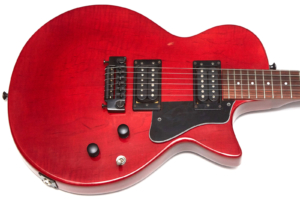
Is it worth the hype? What’s it like owning such a rare guitar? Did it cost one million US dollars? I’ll answer these questions and more in this, the only detailed review of a a Guild Nightbird DX that you’re ever likely to find. Let’s take a look at this rare guitar and see if it lives up to the Guild Nightbird name.
Introduction
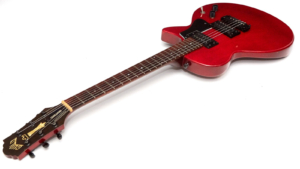
Around 1990 Guild decided to change up the whole Nightbird thing they had going on and split the Nightbird into three different models: The Nightbird ST (Standard), the Nightbird DX (Deluxe), and the Nightbird CU (Custom). I guess the previous incarnation of the Nightbird having only two models (the cleverly named I and II) wasn’t complicated enough. For reasons unknown to me, Guild only made a scant 20 of the ST and DX models, and roughly 100 or so of the Nightbird Customs. You can read more about such production details in my Guide to Nightbird Guitars, but keep in mind that the serial number chart I used is often incorrect.
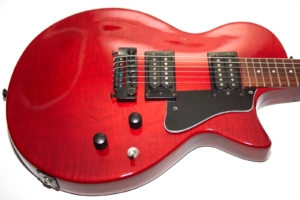
I’ve only ever seen one Nightbird ST and that’s the one that Iron Mike Norton shows in this video. If you’ve got a Nightbird ST and would like to sell it to me or just let me borrow it to review, please leave a comment, and please note that I’m a nutty collector that desperately needs to complete his collection and will likely absolutely not pay you one million dollars for your guitar.
This guitar happens to be serial number LC000020, so it’s the last one ever made! Holy hyperbole! While it’s fun to say that this is the last one ever made, it’s more likely that they were made in a batch (five were made in 1991 according to the often incorrect Guild serial number chart) and that this is just the last one that got stamped. That’s not very fun or hype-inducing, though, so I’d expect to see an ad for this guitar include all sorts of things like , “OMG – RARE – LAST ONE MADE” nonsense. Actually, I guess it worked since I bought the guitar, but I didn’t do it because “OMG RARE!” (maybe a little). Actually, the seller was very upfront about what the guitar is without any hyperbole whatsoever. Just watch out if I ever sell it, ’cause I can sling the hoopla like nobody’s business, what with me being a smith of words and all.
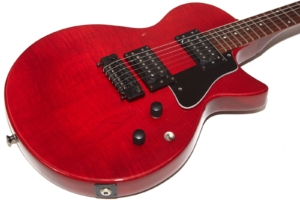
This is a great playing and looking guitar, but it’s not quite the same as any other Nightbird (except, of course, for the flat-top ST). It’s not hollow, it’s not covered in bling, and it doesn’t even have any binding. It’s more like a Bluesbird than a Nightbird, but that’s not right either because Bluesbirds from the ’80s were nothing like this and Bluesbirds from the late ’90s, though shaped similarly (as in kind of like a Les Paul), are hollow while this is solid.
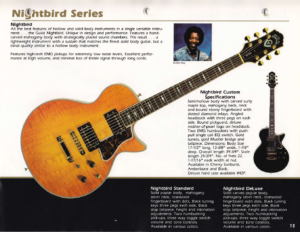
There is a mention of the Standard and Deluxe models in the 1990 catalog, and while there is no picture, the description reads, Solid carved poplar body, mahogany set-in neck, rosewood fingerboard with dots, black tuning keys, stop tailpiece, height and intonation adjustments. Two humbucking pick-ups, three way toggle switch, volume and tone controls, and my favorite “I don’t want to do any real work” catalog copy of all time: Available in various colors.
The catalog copy would lead me to believe that there are non-maple versions out there but the only Nightbird DX I’ve seen without an obvious maple top is Hans’ black DX which can be seen in that same thread from 2006 on the Fender FDP forum. That’s a small sample size, but considering that I’ve referenced four different DXs (mine, Hans’, and two blue DXs), that’s one fifth of all of the Nightbird DXs in existence! Using similar math I can say that I own 5% of the world’s supply, so that’s fun. I’ll make sure to add that to my list of ad hyperbole should I ever decide to sell.
Finish
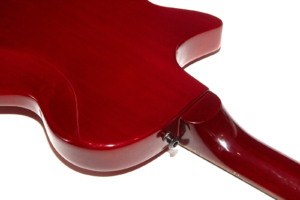
With the ever helpful Available in various colors statement in the catalog, I can’t tell you what colors they were produced in, but I can tell you that I’ve seen them in red (this one), blue, and black (the one Hans links to in that defunct Fender forum).
If you’ve got a Nightbird DX and you’d like to show it to the world, add a comment below. If you have that blue one I keep linking to, please just sell it to me. We wants it. We needs it. My precious…
Fretboard and Neck
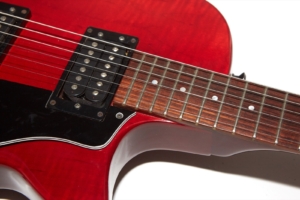
The rosewood fretboard is very nice especially when compared with some of the stuff I see on modern guitars, but it’s pretty typical of Guild electrics from the late-80s and early ’90s, and that’s a good thing because I don’t recall ever being disappointed by a Guild electric’s fretboard.
There is no binding anywhere on the guitar. The neck is nice and wide while being pretty comfortable without being big like an Historic Les Paul. The fretboard radius measures a very flat 20″ on my gauges which kind of surprised me on such a traditionally shaped guitar (Les Pauls are 12″). 1991 was the end of the shredder era with Slash bringing the Les Paul back into favor, so who knows what sort of mixed signals the designers were trying to cope with while putting the design of the DX together?
The frets measured .027″ high by .08″ wide which doesn’t match anything I could find, but puts them in the medium or regular range I suppose. They’re certainly not jumbos.
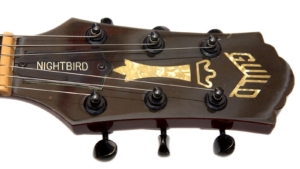
Build Quality
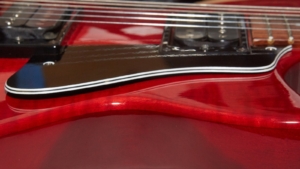
The neck joint is wonderful and so low-profile that I don’t even notice that it’s there. That makes high fret access a breeze and makes the guitar easy to hold since the center of gravity is just a little bit on the body side of the neck joint.
Pickups
The pickups in this guitar are dual-black bobbin Dimarzios, but they are not labeled as anything besides the tremendously unhelpful stamp, Dimarzio Pickups – Made in USA. One coil has slugs and one has adjustable pole pieces which makes them look like PAFs, but I couldn’t be sure so I had to do some digging.
I emailed the guitar’s information along with the pics shown here to Dimarzio (they are always super-helpful) in an effort to identify the pickups. The response I got back from them was, The pickups we made for Guild were slightly hotter versions of our first-generation PAF. They did not have a specific model number, and they were not available individually (via email: May 24 2018). I can’t say if that was actually in reference to these pickups or if that means that these pickups are actually XR7s (most XR7s I’ve seen have bobbins that aren’t so black). The pickups sound great and measure 7.92k Ω at the neck and 7.96k Ω in the bridge which is another argument against them being XR7s since the XR7s I’ve owned have been in the 8-8.5k Ω range.
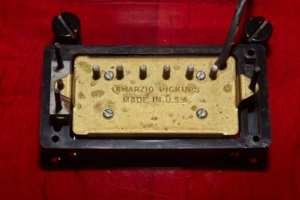
Electronics
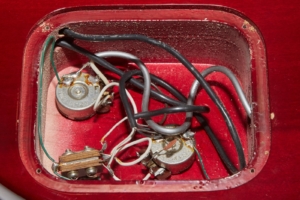
Having master controls means no fine-tuning of the middle position, so if that’s your thing you might feel constrained by this design, but as a guy who usually leaves all knobs on 10, this doesn’t bother me at all. In fact, I like the simplicity of the 2-knob setup.
The volume pot is 500k Ω while the tone is 200k Ω with both having 137 codes identifying the manufacturer as CTS. The tone capacitor is a simple orange ceramic disc labeled 203 which makes it .020 μF.
The wiring is quite simple as you’d expect from a master volume/tone setup, so there is really nothing much to elaborate on when it comes to the electronics. Sometimes simple is good, and in this case it certainly works for me.
Hardware
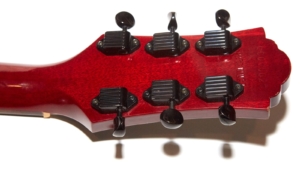
The knobs are some of my favorites from Guild which are pretty common on their electrics from the 1980s, though they can be pretty darn hard to replace these days if you happen to lose one and want an exact replacement. You can get very similar looking models on Amazon but a true Guild collector will be able to tell the difference. Also that switch-tip in the picture is pure Guild and they can be very hard to find so if you’ve got one, don’t lose it! They’re another sign of originality on older Guilds.
The tailpiece is a Schaller two-piece bridge/tailpiece combination of a very unique design which incorporates a pretty cool wraparound tailpiece with an adjustable bridge that combines into a single unit when the guitar is strung up. I’d never seen this bridge used elsewhere, but that doesn’t mean much. I’m not usually a fan of wraparound tailpieces, but I like the way this one plays and more importantly, I like the way it feels while I’m playing. It’s tight, it doesn’t rattle, it offers sufficient intonation and hight adjustment, and just seems to work.
The bridge is a Schaller 455 bridge/tailpiece that was used on the Gibson Spirit guitar in the 1980s. The bridges do pop up on eBay and Reverb from time to time, but they don’t seem to be in current production from what I could see. I therefore don’t recommend breaking it.
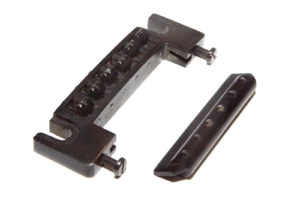
Sound
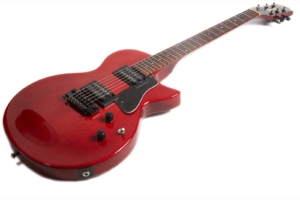
ODS100 Clean
Open Chords #1
Open Chords #2
7th Chords
JCM-800
A Barre Chords
D-Shape Chords
Orange RV50
Stuff
This guitar has crazy good sustain on chords for which I have to at least partially acknowledge that wacky wraparound tailpiece. Between the sustain and the responsiveness of the guitar I found myself wanting to really dig into the strings or strum just a bit harder in order to get the last hairy bit of dynamics out of the guitar. It reminded me of playing a really good Tele where you are basically the boost control.
With neck pickup absolutely sings with high gain on the upper frets, and the bridge pickup has all the biting tone you’d ever want while the middle position gives you the in-between tone we all love. I have to admit that I kind of wished for more control, and while I’d be reticent to change such a great sounding and playing guitar, I think the addition of a push/pull single coil control or maybe even just a phase switch might open this guitar up to more possibilities. That might have changed the desired price point for the design, though, and with so few of these guitars in existence I guess we’ll never know. Then again, like the “killer tele” I mentioned earlier, a simple guitar makes the player work for the tone and I think that’s the vibe I got from this guitar.
Playability
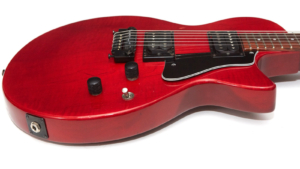
The bridge does its job without getting in the way, the tuners work even though I think the buttons are too small, and the controls are simple and easy to adjust while playing. Since there is a master volume and tone you lose a bit of tonal variety compared with a 4-knob Les Paul, but that doesn’t bother me much.
I love arched-top guitars so I enjoy playing this one. With it’s wide flat neck it plays nicely while not having the very beefy necks found on some Les Pauls. I tend to prefer neck binding on my guitars, but the lack of it only bothers me cosmetically since it plays so well. Really, this is a very simple guitar so there’s not much to complain or rave about so long as the quality is there, and being a Guild, the quality is definitely there, even if it isn’t necessarily deserving of the Nightbird name.
Conclusion
I think these guitars are really cool even if they’re nothing like the other instruments bearing Guild Nightbird name. While perhaps it would have been better named as some kind of Bluesbird, the fact remains that it’s an arch-top solidbody US-made Guild that plays and sounds great.
The fact that there are few of them is a shame because they’re really quite well made, though I’m not sure I’d go crazy looking for one unless you were a collector or a Guild nut like me.
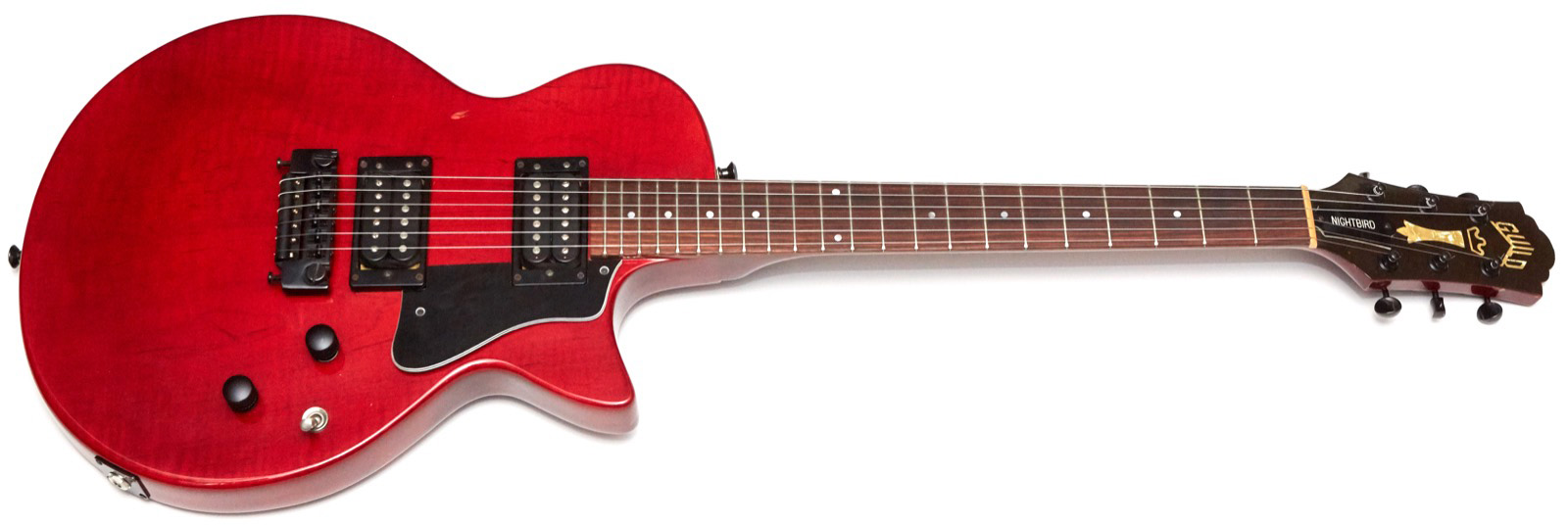
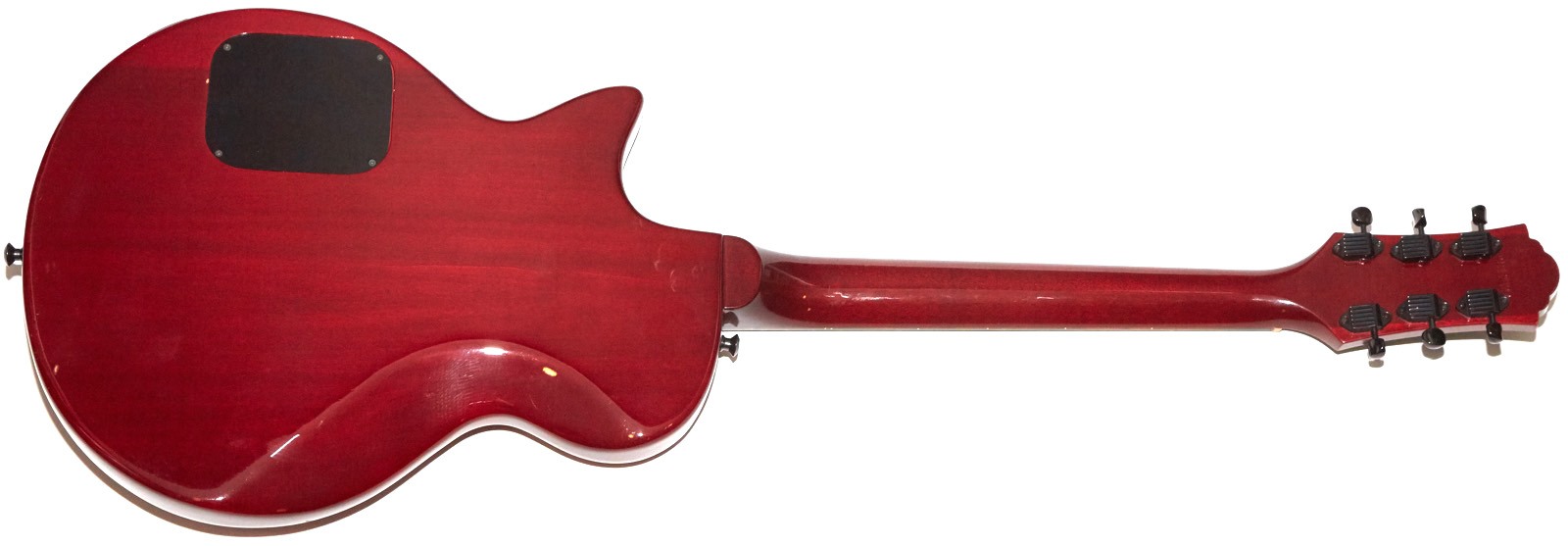
Now, if you have the blue one with the Guild HB1 pickups in it, then we need to talk, after which you need to sell it to me because I’ve somehow developed an emotional attachment to that guitar having only seen pictures of it on the Internet. Oh, and if you have a Nightbird Standard (ST) then PLEASE sell it to me. I’m not above begging.
Donate: PayPal Crypto:
ETH: 0x0AC57f8e0A49dc06Ed4f7926d169342ec4FCd461
Doge: DFWpLqMr6QF67t4wRzvTtNd8UDwjGTQBGs


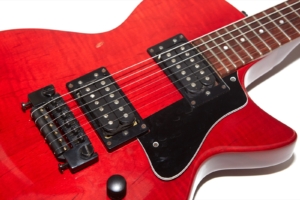
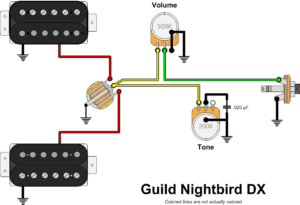
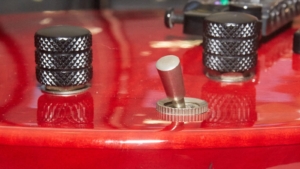
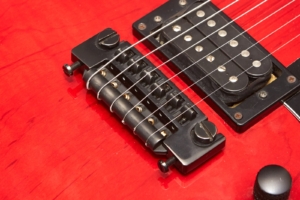
Those tuners look like Kluson “Wafflebacks”.
I haven’t had a chance yet to closely read all the info you have here, but I own LC000006. It was a gift from my father, not sure where he found it. It is a solid (ie not transparent) electric blue color, it appears to be the same as yours in all other ways (pickups, tuners, etc).
I’d love to see pics!
I will get some pictures together for you soon. I just spoke to my father about it, and upon close inspection and discussion, I’ve come to the realization of a major difference in my #6 compared to the others…
(Ready for this?)
The carved top does NOT appear to be maple on mine.
While I would grant that a solid color finish on maple would be kind of a waste of beautiful wood, the texture of the grain on my guitar is very clear even through the solid finish, and it appears to be something more coniferous – Possibly spruce? This kind of fits with the “leftover parts” idea, no?
Woods aside, it’s still a very nice guitar and appears to have never really been played regularly by anyone (myself included, although I’m rediscovering my music hobby and expect to be playing it a lot more, as it’s probably the nicest guitar I own!)
Sadly, it appears there is a problem with the glue on the original case lining breaking down that has been causing awful stickiness and corrosion on the frets! I just had to do some serious work on some frets (the ones sitting directly over/under the neck support in the Guild case) to make them presentable/functional. I actually found this site in a search for a replacement case, as the Nightbird body shape is too wide for any case I own!
That Schaller 455 bridge, is part of the secret sauce! I have a 1984 Ovation Ultra GP, with one. I swapped it out for a nifty looking new Schaller Signum bridge. It sounded like a different guitar! And not for the better to my ears.